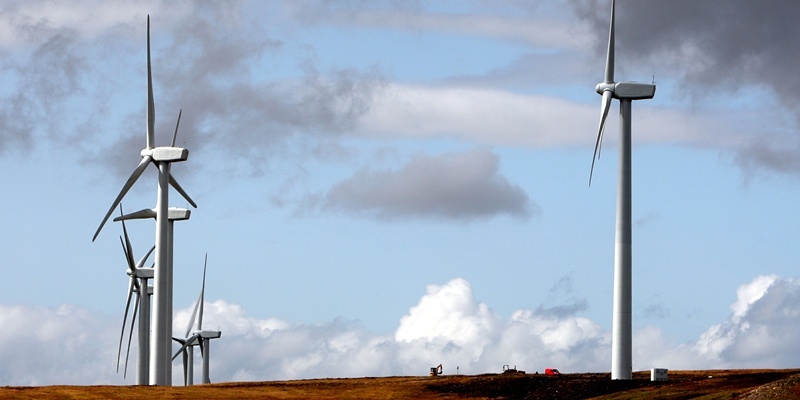A row has broken out after a leading Scottish conservation charity released a report it says shows wind farms will produce far less energy than claimed.
The John Muir Trust report (PDF link), published on Wednesday, says output from wind farms metered by the National Grid is often less than 10% of their capacity.
It says wind “cannot be relied upon” to provide any significant level of energy generation at any defined time in the future and there is an “urgent need” to re-evaluate the implications of relying on wind power to meet Scotland’s future energy needs.
Report author Stuart Young said, “Over the two-year period studied in this report, the metered wind farms in the UK consistently generated far less energy than wind proponents claim is typical.
“The intermittent nature of wind also gives rise to low wind coinciding with high energy demand. Sadly, wind power is not what it’s cracked up to be and cannot contribute greatly to energy security in the UK.
“It was a surprise to find out just how disappointingly wind turbines perform in a supposedly wind-ridden country like Scotland. Based on the data, for one third of the time wind output is less than 10% of capacity, compared to the 30% that is commonly claimed.”
The study analysed electricity generation from all UK wind farms metered by National Grid, between November 2008 and December last year. All were in Scotland, until three in England were added to the study in July last year.
It found that the average frequency and duration of a low wind event of 20MW or fewer was once every 6.38 days for a period of 4.93 hours and that wind generation was below 20% of capacity for more than half the period of the study.
The study also found that at each of the four highest peak demands of 2010 wind output was particularly low.’Eye-opener’Helen McDade, head of policy at the John Muir Trust, said, “This report is a real eye-opener for anyone who’s been wondering just how much power Scotland is getting from the fleet of wind turbines that have taken over many of our most beautiful mountains and hillsides.
“The answer appears to be not enough, and much less than is routinely claimed.”
However, Scottish Renewables said it does not trust the figures and said the renewable energy industry will transform Scotland’s economic fortunes.
Its director of policy, Jenny Hogan, said the report is misleading and irresponsible.
“Yet again the John Muir Trust has commissioned an anti-wind farm campaigner to produce a report about UK onshore wind energy output,” she said.’Unofficial figures'”We have no confidence in these unofficial figures. Last time Stuart Young completed research on wind farm output an independent analysis showed serious discrepancies.
“He claimed the load factor for wind for November 2009 to November last year was 22%, but GL Garrad Hassan, an independent consultancy firm, found on average it was 24.8%.
“We recognise this is lower than the 30% average load factor. However this was anticipated as it had been an exceptionally calm year. No form of electricity works at 100% capacity 100% of the time.”
She added, “It could be argued the trust is acting irresponsibly given their expertise lies in protecting our wild lands and yet they seem to be going to great lengths to undermine renewable energy which is widely recognised as one of the biggest solutions to tackling climate change the single biggest threat to our natural heritage.
“We have yet to hear the trust bring forward a viable alternative to lower emissions and meet our growing demand for safe, secure energy. Industry, government and regulators all agree that a growing mix of renewables on the system is the answer to affordable, secure, sustainable energy.”
